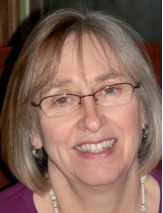
We took a little road trip for a few days. I brought an accordian sketchpad with me and drew on both sides.
It makes a nice story board kind of memory.

In mid-September we drove about an hour south of Boston, Massachusetts, to the town of Plymouth. Sitting in the fine natural harbor was the Mayflower II, a replica of the ship that made the journey in 1620. From Plymouth England to Plymouth, Massachusetts. The very tops of the masts and rigging are cut off by the edge of the paper.
You can go on board and see the tight quarters for the two month voyage. One hundred twenty-three people, plus animals and food supplies. On the sea, two people died and two babies were born.
The settlers, later known as the Pilgrims, were headed for current day New York City. They missed. Another immediate problem, they landed in December too late to go ashore and build shelter. So they lived on the boat over the winter.
In addition to the accordian sketchpad, I was also trying out another pad of paper and watercolors given to me in England at the Urban Sketchers Symposium.
These two buildings were across the street from our hotel. This paper has a rough embossed texture which creates a nice dotted line when drawn on with pencil.
I had a dandy time exploring on my own this day. I was impressed with this life-sized bronze statue erected on the tricentennial of the Pilgrims’ arrival. Her cloak looks wind blown by cold sea breezes.
And here is the rock they supposedly stepped out on. It is probably accurate as the shore is very sandy in general. See the leaf for scale? This rock was much larger before tourists were allowed to chip off chunks as souvenirs. The date was chiseled in during the late 1800s.
I sat on a bench to draw the lamp post and the harbormaster’s office. Tourists kept walking up to me on this day and chatting. They wanted to meet a real Yankee. Perhaps a descendant of a Pilgrim. They didn’t seem too disappointed to learn that I was a tourist too. At least I was from nearby.
My last stop on the day was Burial Hill, the site of the original settlement and fort. I met more people there and gave an impromptu art lecture on the history of gravestones.
Besides the free watercolors, I was using a water soluble graphite pencil.
The next day we drove about ten minutes south of town to a reconstructed site called Plimoth Plantation. There various members of the Wampanoag and Mashpee tribes were demonstrating building techniques and cooking methods. Here I drew the framework for a longhouse. When finished, it is covered with bark.
 I regret that I didn’t draw any figures in the native village. Feeling too shy I guess, but most people do like the attention. A young woman in deerskin was stirring these two pots over the fire.
I regret that I didn’t draw any figures in the native village. Feeling too shy I guess, but most people do like the attention. A young woman in deerskin was stirring these two pots over the fire.
It was a blisteringly hot day. but I sat down on the dry grass to make my attempt at the fort. It looks rickety but on the second floor sit about six cannons.
You can see the seam in the middle of the paper.
The colonists’ village is basically one street headed down to the shoreline. The dirt floored houses are small and crude. The roofs are thatch.
Here is my very first attempt at drawing chickens and a long horned cow.
The Plimoth Plantation employs people dressed in historical garb, who go by an authentic name of a settler. They are fun to talk to as they are in character and know nothing beyond 1630 or so.
Recent research shows that: 1. No, the Pilgrims did not dress in black and white. They liked colorful clothing. 2. They did not wear pointy black hats with buckles on them. The women and the men wore rounded wide brimmed brown suede hats, no buckles. And some lacy collars.
A small dark room at the stern of the ship.
Another drawing of the ship. I wanted to capture the design of the flower. The previous drawing is just behind those windows.
One day I drew a pot of flowers as I sipped my morning coffee.
Last
night I went for a little walk at 7 PM. This is what I saw across the
street from our condo complex in Edmonton, Alberta, Canada. A whole field full of yellow-orange earth
moving machinery. All in motion in a sort of dance of the dirt. I don’t
know what they are doing other than preparing a site before cold
weather sets in.
The trees were yellow too.




















